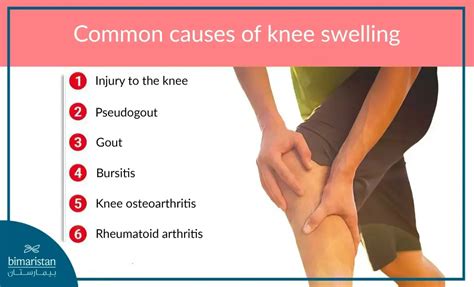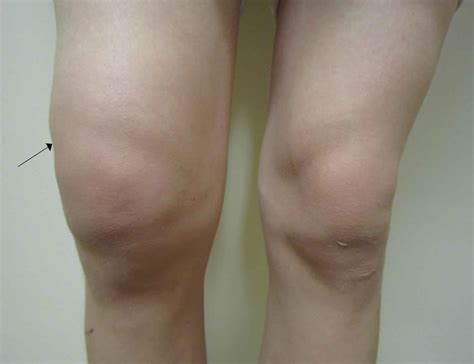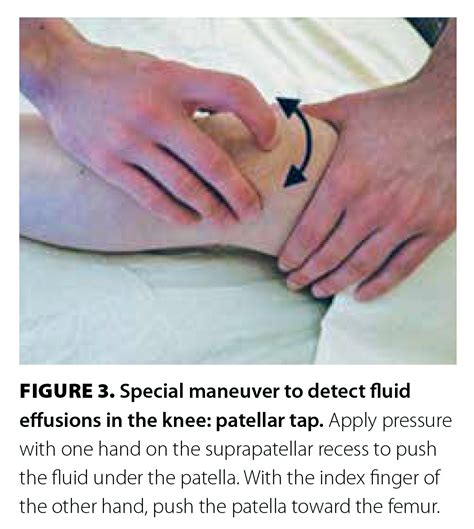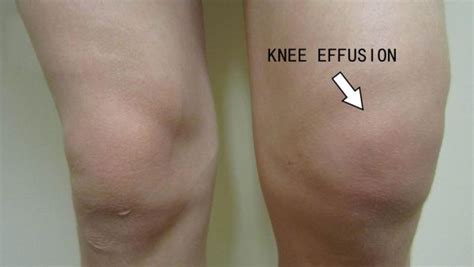Intro
Discover knee effusion symptoms, causes, and treatment options. Learn about swelling, pain, and stiffness in the knee joint, and how to manage knee effusion with physical therapy, medication, and more, relieving water on the knee and related knee injuries.
Knee effusion, also known as water on the knee, is a condition characterized by the accumulation of excess fluid in the knee joint. This condition can cause a range of symptoms, from mild discomfort to severe pain and limited mobility. Understanding the symptoms of knee effusion is essential for proper diagnosis and treatment. In this article, we will delve into the world of knee effusion, exploring its causes, symptoms, and treatment options.
The knee joint is a complex structure that consists of bones, ligaments, tendons, and cartilage. It is a synovial joint, which means it is filled with a thick, clear fluid called synovial fluid. This fluid helps to reduce friction between the joint's moving parts, allowing for smooth movement and flexibility. However, when the joint becomes injured or inflamed, the synovial membrane can produce excess fluid, leading to knee effusion. This excess fluid can cause the knee to become swollen, stiff, and painful, making it difficult to perform everyday activities.
Knee effusion can be caused by a variety of factors, including injuries, infections, and underlying medical conditions. For example, a blow to the knee or a sudden twisting motion can cause the joint to become inflamed, leading to excess fluid production. Infections, such as septic arthritis, can also cause knee effusion, as can underlying conditions like rheumatoid arthritis or gout. In some cases, knee effusion can be a symptom of a more serious underlying condition, such as a tumor or a blood clot. Therefore, it is essential to seek medical attention if symptoms persist or worsen over time.
Knee Effusion Symptoms

Types of Knee Effusion
Knee effusion can be classified into different types, depending on the underlying cause. For example, traumatic knee effusion occurs after a sudden injury, such as a fall or a blow to the knee. Inflammatory knee effusion occurs in response to an underlying condition, such as rheumatoid arthritis or gout. Infectious knee effusion occurs when the joint becomes infected with bacteria or other microorganisms. Each type of knee effusion requires a different treatment approach, making proper diagnosis essential for effective management.Causes of Knee Effusion

Risk Factors for Knee Effusion
Certain risk factors can increase the likelihood of developing knee effusion. For example, athletes or individuals who participate in high-impact sports are at increased risk of traumatic knee effusion. Individuals with underlying medical conditions, such as rheumatoid arthritis or gout, are at increased risk of inflammatory knee effusion. Older adults are at increased risk of degenerative knee effusion, due to wear and tear on the joint. Additionally, individuals who are overweight or obese are at increased risk of knee effusion, due to the added stress on the joint.Diagnosis of Knee Effusion

Treatment Options for Knee Effusion
Treatment for knee effusion depends on the underlying cause and severity of symptoms. Conservative treatment options include rest, ice, compression, and elevation (RICE), as well as physical therapy and pain management medications. In some cases, the excess fluid may need to be drained, either through a needle or surgical procedure. Additionally, underlying conditions, such as rheumatoid arthritis or gout, may require ongoing management and treatment.Treatment for Underlying Conditions

Prevention and Management
Preventing knee effusion requires a combination of lifestyle modifications and preventive measures. For example, maintaining a healthy weight, engaging in regular exercise, and avoiding high-impact activities can help reduce the risk of traumatic knee effusion. Wearing protective gear, such as knee pads or braces, can also help prevent injuries. Additionally, managing underlying conditions, such as rheumatoid arthritis or gout, can help reduce the risk of inflammatory knee effusion.Complications of Knee Effusion

Long-Term Prognosis
The long-term prognosis for knee effusion depends on the underlying cause and effectiveness of treatment. In some cases, knee effusion can be fully resolved with conservative treatment, while in other cases, ongoing management and treatment may be necessary. Additionally, underlying conditions, such as rheumatoid arthritis or gout, may require ongoing management and treatment to prevent future flares or complications.Conclusion and Next Steps

We invite you to share your thoughts and experiences with knee effusion in the comments below. Have you or a loved one been diagnosed with knee effusion? What treatment options have you tried, and what were the results? By sharing your story, you can help others understand the complexities of knee effusion and the importance of seeking medical attention.
What are the common causes of knee effusion?
+Knee effusion can be caused by a variety of factors, including traumatic injuries, inflammatory conditions, infectious diseases, and degenerative conditions.
How is knee effusion diagnosed?
+Knee effusion is typically diagnosed through a combination of physical examination, medical history, and imaging tests, such as X-rays or MRI scans.
What are the treatment options for knee effusion?
+Treatment for knee effusion depends on the underlying cause and severity of symptoms, but may include conservative options, such as rest, ice, and physical therapy, as well as surgical procedures to repair or replace damaged tissues.
Can knee effusion be prevented?
+While knee effusion cannot be completely prevented, individuals can reduce their risk by maintaining a healthy weight, engaging in regular exercise, and avoiding high-impact activities.
What are the potential complications of knee effusion?
+If left untreated, knee effusion can lead to a range of complications, including chronic pain, limited mobility, and decreased quality of life.
